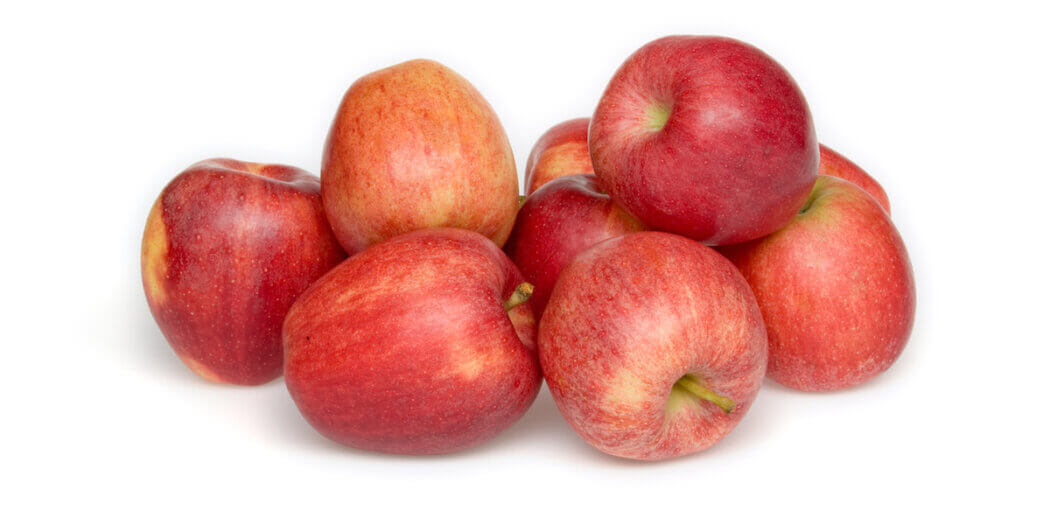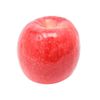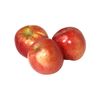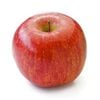Grocery Guides
Apples – All You Need To Know | Instacart’s Guide to Groceries

What are apples?
Apples are fruit belonging to the Rosaceae family. Their cousins include fruits such as pears, peaches, plums, cherries, and strawberries.
The apple is one of the most cultivated tree fruit. It’s packed with vitamins A and C, high in carbohydrates, and is an excellent source of dietary fiber.
Where did apples originate from?
DNA analysis confirms that the domesticated apple originated from its wild ancestor Malus sieversii, a native of the Tien Shan Mountains in Kazakhstan, Central Asia. The wild apple has been growing here for millions of years and can still be found fruiting today.
In fact, the city of Almaty, where these apples grow in apple forests, is known as the birthplace of the apple.
Scientists believe that birds and bears were responsible for transporting the seeds of the wild variety to other parts of the world long before human beings started cultivating apples themselves.
How are apples grown?
Apples grown from seed result in fruits that differ greatly from the parent apples. This inherent genetic quality in apple propagation has resulted in thousands of diverse varieties of apples around the world. However, in terms of apple production, the unpredictable nature of the apple genome means that apple growers cannot always reproduce the desired characteristics.
That’s why apples are mainly grown by grafting onto rootstock, which controls the speed of growth and size of fruit, making for easier harvesting.
Apples thrive in regions that have a distinct winter season and are generally grown from latitudes 30° to 60° north or south. The apple tree requires well-drained soil and is ideally grown on slopes where there is optimum air drainage. This allows colder heavier air to drain downwards towards the valley during chilly spring nights when apple blossoms or young fruits are susceptible to cold damage.
How many varieties of apples are there?
Today there are over 7,500 known varieties (or cultivars, if you’re feeling fancy) of apples, out of which 2,500 are grown in the United States.
Apple varieties fall under 3 main categories:
- Cider varieties
- Cooking varieties
- Dessert varieties
In the U.S., the most-grown apple varieties are:
When are apples in season?
While apples are available in the grocery store throughout the year, apples are in season from early July to late November in the northern hemisphere. The peak apple season is September and October.
How do you pick out a ripe apple?
Here are a few tips to follow when picking apples at the grocery store or off the tree:
- Check the skin for any visible signs of decay or bruising.
- Apple skin will naturally have some scuffs or specks, but that does not mean these apples are bad.
- Pick apples that are firm to touch. If apples are mushy, soft, or indent easily, then these apples are not fresh and not the best if eaten raw. Instead, you can use these apples for sauce or smoothies.
- For red varieties of apples, check to see that most of the green skin is covered in red-pink-orange hues. These apples have absorbed more sunlight and have a better flavor when eaten raw.
If you are looking to have your groceries delivered, you can easily shop for apples via Instacart. After adding a product to your cart, use the “instructions” option to notify your Instacart shopper about any preferences or specific directions on how to choose the best products.
Grab it now on Instacart:
How to store apples
Apples are best stored in temperatures of 30° to 35°F with 90-95% relative humidity.
The best place to store apples is in the fridge. Place them in the crisper drawer in a plastic bag with holes in it or store them wrapped in a damp paper towel.
Apples release ethylene gas, which can increase the ripening process of other fruits and vegetables placed next to the apples. Storing apples in the fridge can slow down the release of ethylene, but it is best to keep apples separate from other veggies and fruits.
You can also store apples in a cool dark place such as the garage, where it’s relatively humid. It’s best if the temperature is almost close to freezing. Wrap each individual apple with the stem in newspaper or kraft paper to keep apples separate from each other. Place wrapped apples in a tray or a bin in a single layer.
Periodically check apples for decay or spoiling, and use larger apples first as they get soft quicker.
Apples stored in the fridge should last for 4-6 weeks, while the ones stored in the pantry will last about 3 weeks. However, if you leave them on the counter, apples will keep for 5-7 days.
How to tell if an apple is bad
You can tell if the apples are on their way out or if they have gone bad by looking for the following signs:
- Bruising, soft spots, and discoloration
- Holes and brown soft spots
- Liquid oozing from the skin
- Wrinkled skin
- Bland and grainy taste
- Mushy texture
What can you substitute for apples?
Need to substitute apples in your recipe? You can use other fresh fruit such as:
- Apricot
- Blueberries
- Papaya
- Peach
- Pear
- Pineapple
- Quinces
- Raspberries
Make an apple recipe
An apple is a versatile ingredient and is widely popular as a healthy snack among kids and adults. So why not make an apple recipe today? Start by getting all your ingredients, including apples from Instacart grocery delivery.
Most Recent in Grocery Guides

Grocery Guides
15 Tasty Ice Cream Alternatives: Yogurt, Shaved Ice & More
Ice cream has been a beloved treat for generations. With its rich flavors and smooth texture, it’s no wonder people choose ice cream when looking for dessert. However, as dietary restrictions and health consciousness evolve,…...
Apr 10, 2024![When Is Artichoke Season? [Recipes + Guide]](https://www.instacart.com/company/wp-content/uploads/2024/03/when-is-artichoke-season-hero-447x224.webp)
Grocery Guides
When Is Artichoke Season? [Recipes + Guide]
Quick Answer When is artichoke season? In North America, artichoke season is from March to May, with smaller batches in October. Artichokes are a unique and versatile vegetable known for its tender heart and delicate…...
Mar 6, 2024
Grocery Guides
Brown Eggs vs. White Eggs: How Are They Different?
Eggs are an essential ingredient in many sweet and savory recipes. The possibilities are endless when it comes to using these protein-packed powerhouses — you can scramble, fry, boil or poach eggs, or you can…...
Feb 24, 2024










 Squash – All You Need to Know | Instacart Guide to Fresh Produce
Squash – All You Need to Know | Instacart Guide to Fresh Produce  Ghost Pepper – All You Need to Know | Instacart Guide to Fresh Produce
Ghost Pepper – All You Need to Know | Instacart Guide to Fresh Produce  Sprouts – All You Need to Know | Instacart Guide to Fresh Produce
Sprouts – All You Need to Know | Instacart Guide to Fresh Produce 

